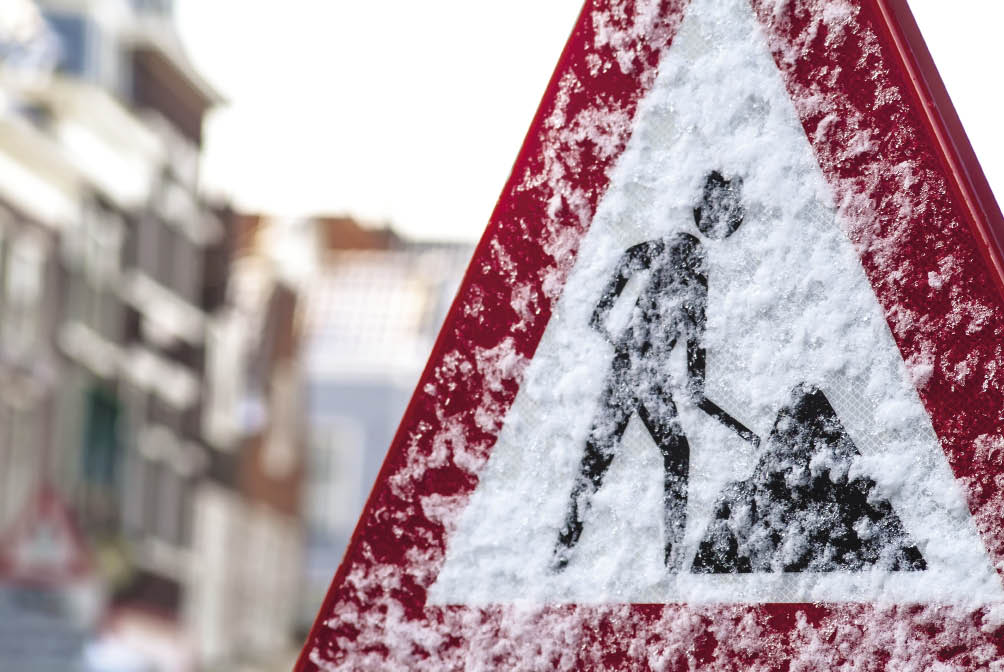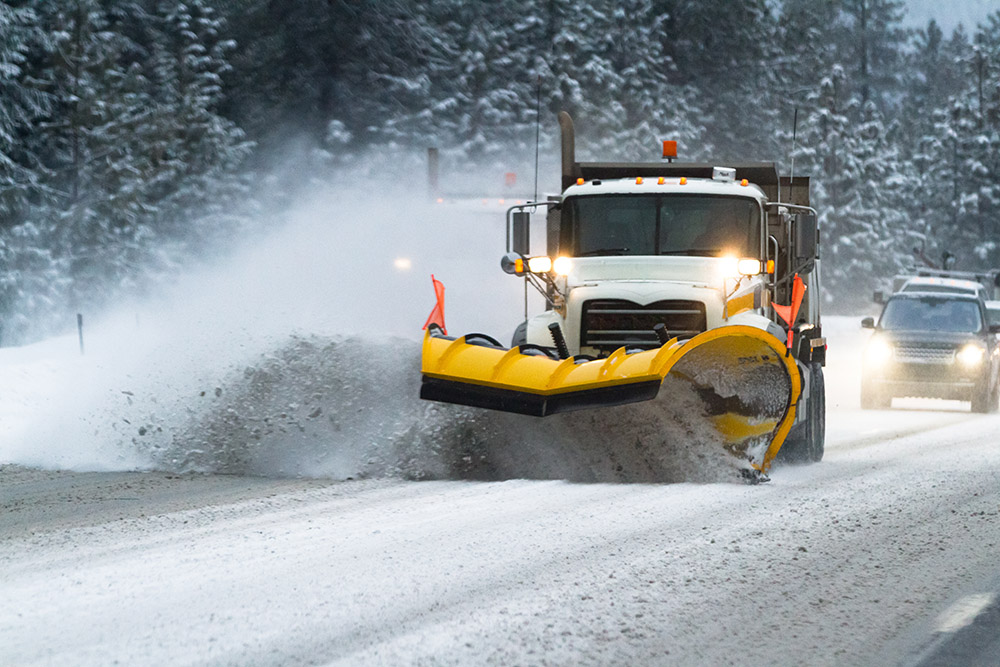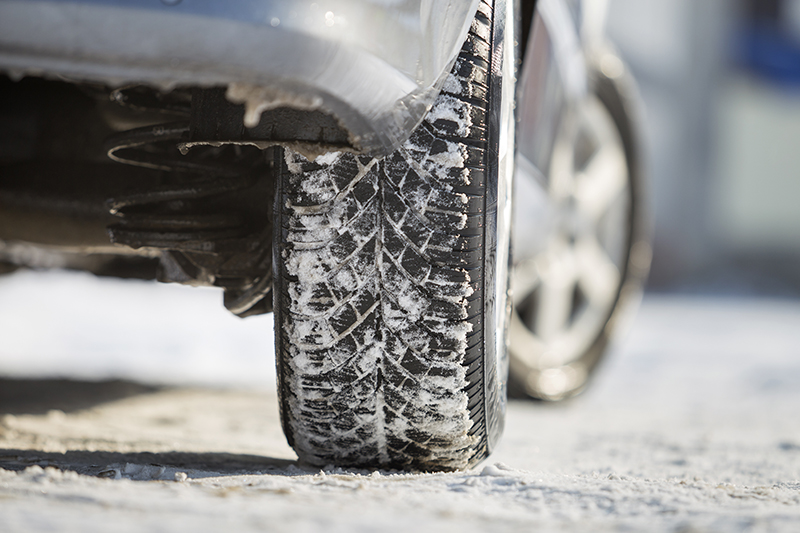
Welcome to OHS Canada’s special focus on Extreme Weather PPE for Safety Professionals, an in-depth theme week running from Oct. 30 to Nov. 3.
As winter prepares to bear down, preparing for extreme weather conditions is top of mind for safety professionals across the country. This week, we’re bringing you stories from our archives and new original content on best practices in cold weather.
Explore expert interviews, product reviews, and articles designed to equip you with the knowledge you need to stay safe in the harshest conditions. Stay protected, stay informed. New content posted throughout the week!

(Patrick/Adobe Stock)
Buddy system among key tactics to protect workers from extreme cold, says Alberta official
The first step to solving a problem is to recognize it exists. Trent Bancarz, an Edmonton-based spokesperson for Alberta Jobs, Economy and Trade, said it’s important to remember that plunging temperatures aren’t just uncomfortable — “cold weather is a workplace hazard in certain conditions and (employers) have to take steps to assess the risks and control to the extent extent reasonable or possible. Read more.

Kristine D’Arbelles, senior director, public affairs at the Canadian Automobile Association (CAA).
‘Don’t be an igloo on wheels’: CAA expert offers tips to stay safe on the roads this winter
It’s almost time for Canadians to break out their white knuckles. With the calendar turning to November, snow is already starting to fly in many parts of the country — which can make driving more hazardous for workers who are behind the wheel. Kristine D’Arbelles, senior director of public affairs at the Canadian Automobile Association (CAA), sat down with OHS Canada to talk about what employers and workers can do to ensure they stay safe while driving in the winter. Read more.

Suzana Prpic, senior manager of prevention field services at WorkSafeBC.
Breaking the ice: WorkSafeBC’s Suzana Prpic offers advice to protect workers from cold
As winter weather approaches, employers need to take necessary steps to ensure the safety of their workers, especially those who work outdoors and are exposed to extreme temperatures and winds. In an interview with OHS Canada, Suzana Prpic, senior manager of prevention field services at WorkSafeBC, outlined best practices and guidelines designed to protect workers from cold stress injuries like frostbite and hypothermia. Read more.

Driving in extreme winter conditions requires extra care from employees. Photo: Adobe Stock
Safety behind the wheel: Ontario court clarifies employer liability in worker-related traffic injury
Driving in the winter brings additional hazards, and it also raises a question: If one of your workers injures someone else while behind the wheel and on the clock, what happens? Read more.

Photo: WorkSafeBC
Slips, trips, and falls injure 7,000 workers in B.C. annually
About one in five workplace injuries are related to slips, trips, and falls, according to WorkSafeBC. That translates into an average of about 7,000 injuries every year in the province. Read more.
(Avatar_023/Adobe Stock)
Protecting outdoor workers from winter hazards
The mornings are frosty, and the afternoon air doesn’t just nip at your nose, it seems to bite at it (along with any exposed skin, for that matter). As the sun goes down, the evenings get even colder, and act as a reminder that while the days are short, the season is long. Are your workers prepared for winter weather? Read more.

Photo: Adobe Stock
Focus on preventing spread of respiratory viruses in winter months
The early months of the year can bring about a refreshed and renewed focus for many. But these Canadian winter months are also marked by blustery weather conditions and the seasonal threat of respiratory viruses. Read more.

Proper preparation prevents poor winter performance. (DutchScenery/Getty Images)
How to protect workers from inclement winter weather
According to the Canadian Institute for Health Information, there were over 9,000 hospitalizations due to falls on ice from from 2016 to 2017. Winter weather also poses hazards such as cold stress to outdoor workers and dangerous driving conditions for commuters. Read more.

Extreme weather in the winter can increase the risk of workplace injuries. Photo: Adobe Stock
Winter weather contributes to workplace injury spike: WorkSafeBC
With winter in full swing across the country, experts are reminding employers to update their risk assessments as conditions change. Read more.

(wollertz/Adobe Stock)
Snow will come off Northern Ontario highways faster, province pledges
The new “ON Trans-Canada” standard requires contractors to clear Highways 11 and 17 within 12 hours of the end of a winter storm. That’s four hours faster than the previous standard, the province said. Read more.

(bilanol/Adobe Stock)
Winter tire use among Canadian drivers slowly rising: Survey
About one-third of Canadians outside Quebec don’t use winter tires, according to a new survey. In Quebec, winter tires are mandatory under provincial law. Read more.

For work in cold weather, employers need to do a cold-stress assessment and implement a plan to protect workers from cold exposure. (Artem/Adobe Stock)
Western employers reminded to take precautions for workers toiling in cold
With cold temperatures and winter conditions continuing to be in the forecast for most of B.C., WorkSafeBC is reminding employers and workers to take precautions and stay safe when working outdoors. Read more.

(Pascal Huot/Adobe Stock)
Brakes compromised by ice in runaway train that killed worker
A report into the 2018 death of a New Brunswick CN worker says the brakes of two runaway railcars were compromised by ice before the cars collided. Read more.
